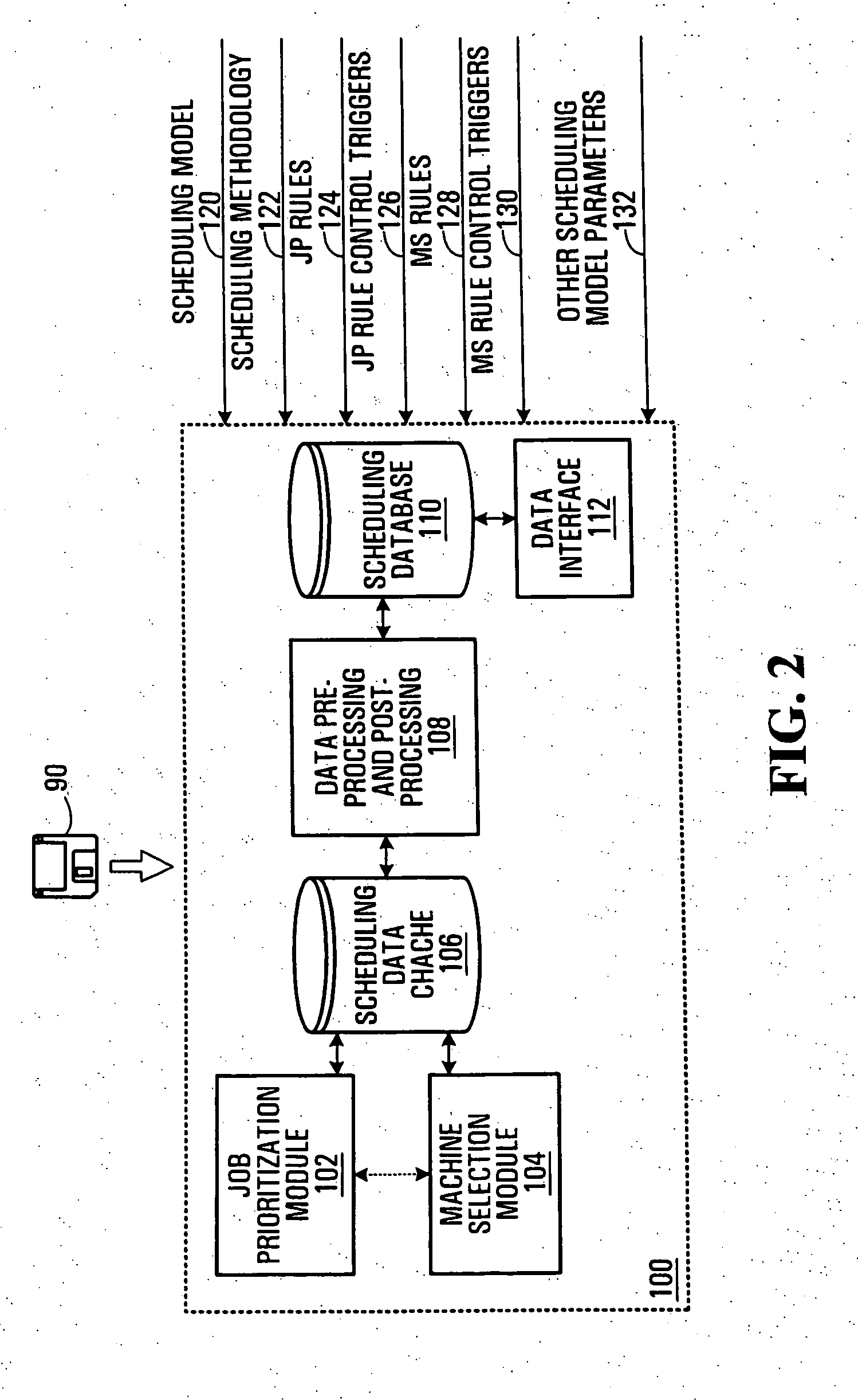Finite capacity scheduling using job prioritization and machine selection
a scheduling and job technology, applied in the field offinite capacity scheduling, can solve the problems of reducing the practical implementation value of scheduling models, and reducing so as to improve the utilization rate of machines
- Summary
- Abstract
- Description
- Claims
- Application Information
AI Technical Summary
Benefits of technology
Problems solved by technology
Method used
Image
Examples
Embodiment Construction
[0067] Referring to FIG. 2, a scheduling system 100 exemplary of an embodiment of the present invention is illustrated. The system 100 is capable of receiving information regarding a set of work orders to be scheduled, a set of machines on which the work orders are to be executed, and various operational constraints, and generate therefrom a schedule for each machine which will result in an efficient processing of the work orders. The output may take the form of a production schedule, dispatch list, Gantt chart or scheduling report for example. The system 100 may be a computer or other computing device executing software which implements the scheduling method described herein. The software may be loaded from a computer readable medium, such as a removable magnetic or optical disk 90. The system 100 is sufficiently flexible to generate schedules for a variety of operating environments.
[0068] As shown in FIG. 2, scheduling system 100 includes a Job Prioritization (JP) module 102, a M...
PUM
 Login to View More
Login to View More Abstract
Description
Claims
Application Information
 Login to View More
Login to View More - R&D
- Intellectual Property
- Life Sciences
- Materials
- Tech Scout
- Unparalleled Data Quality
- Higher Quality Content
- 60% Fewer Hallucinations
Browse by: Latest US Patents, China's latest patents, Technical Efficacy Thesaurus, Application Domain, Technology Topic, Popular Technical Reports.
© 2025 PatSnap. All rights reserved.Legal|Privacy policy|Modern Slavery Act Transparency Statement|Sitemap|About US| Contact US: help@patsnap.com



